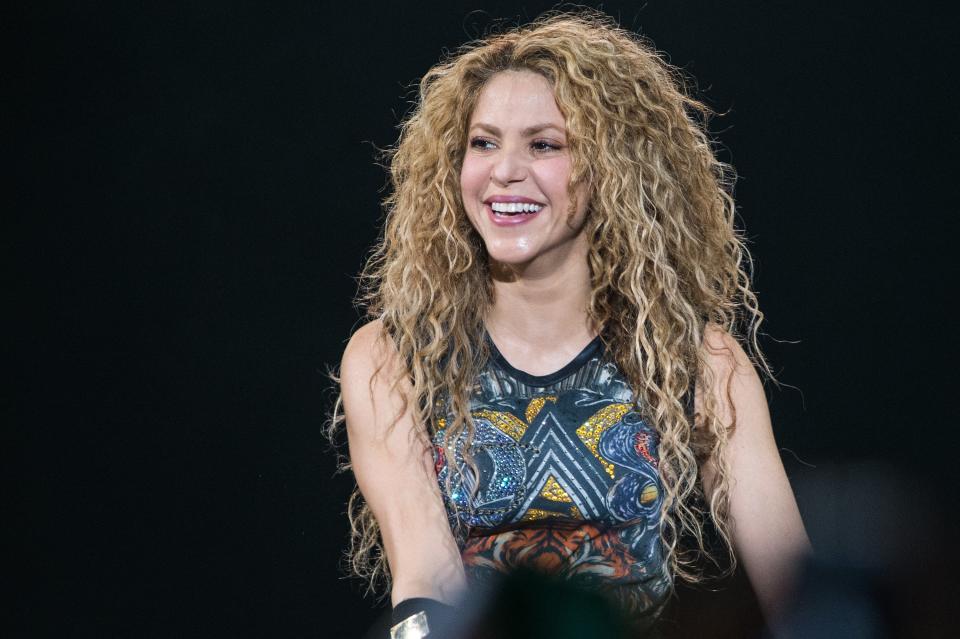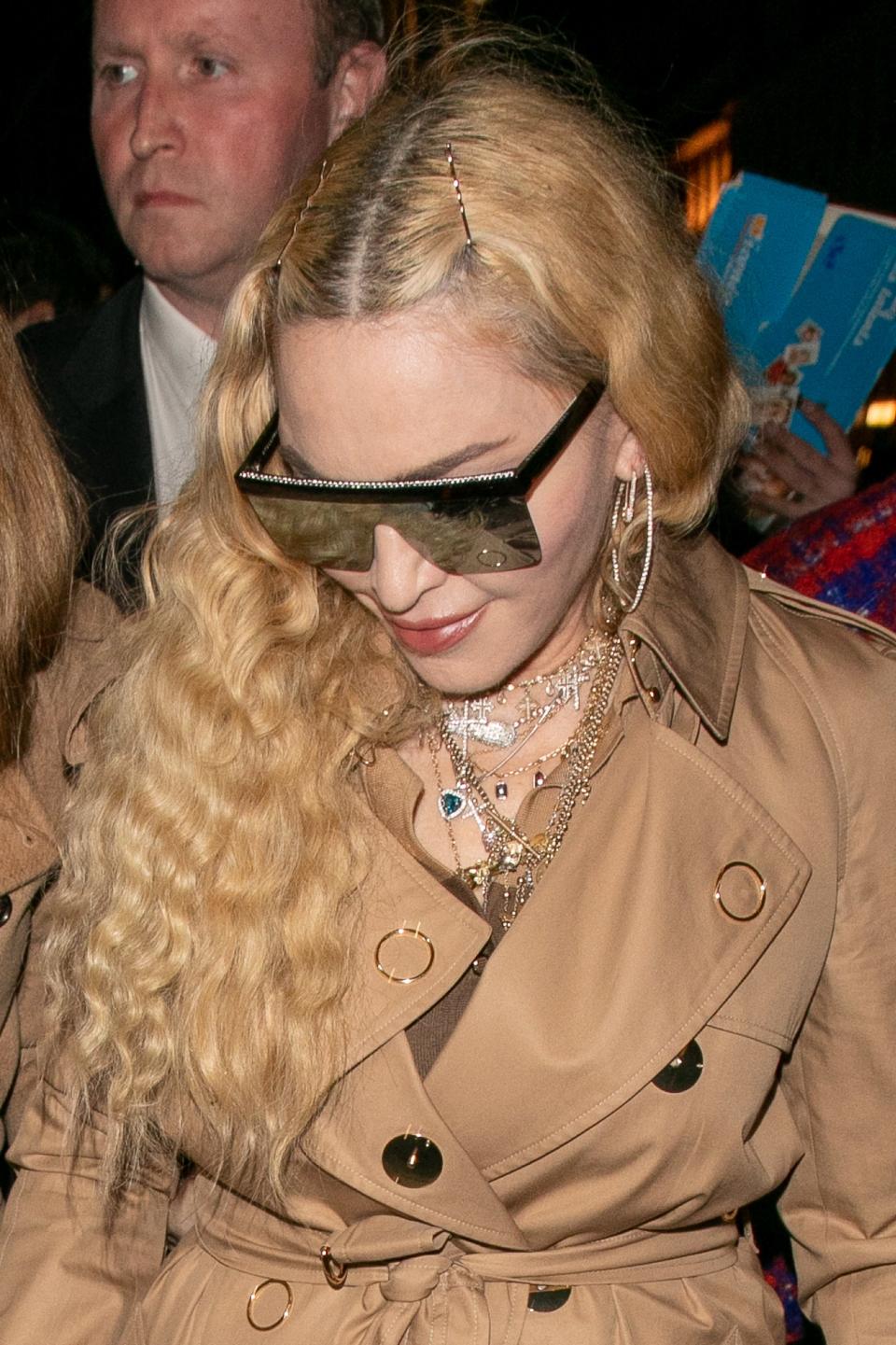How to Bleach Curly and Kinky Hair Without Damaging It
If there’s one thing everyone in the hair-care space can agree on, it’s that bleaching is one of the harshest processes out there. Though it's pretty much the only way to get that dramatic dark-to-light color change, bleach can cause serious damage, especially on textured hair. We consulted the pros to find out exactly how bleach works, its effects on the hair, scalp, and skin, and how to protect your curl after lightening up.
What does bleach do, anyway?
It’s easy to forget just how strong chemical bleach is when you're sitting in your colorist’s chair or buying a box of dye from the drugstore. However, it doesn’t benefit anyone to ignore the fact that bleach is highly toxic. Bleach powder is typically made of a host of reactants, including peroxygenated ammonium, and sodium or potassium salts consisting of persulfates, perborates, and percarbonates. These compounds are mixed with liquid hydrogen peroxide to create bleach.
“When this composition is applied to hair, high concentrations of oxygen penetrate deep into the hair’s cortex and break down the melanin or natural color pigmentation. As the melanin granules are degraded, the hair becomes lighter in color,” explains Joseph Cincotta, a cosmetic chemist for Federici Brands (parent company of Color Wow and Time Bomb). “Oxidation decolorizes the pigment in your hair shaft, which is why bleach will turn your hair almost white if it’s left on for too long,” explains Anabel Kingsley, a trichologist at Phillip Kingsley. This is also why highly processed hair often has a yellow tint; keratin (the protein our hair is made of) is naturally a pale yellow.

Glamour Celebrates 2017 Women Of The Year Awards - Backstage
Keratin is held together with disulfide (or cysteine) bonds, which give hair its strength and elasticity. In order to create enough oxygen for oxidation to occur and effectively lighten the hair, activated bleach must have a high pH, which, as Cincotta points out, is in the 9.5 to 11.5 range. “When these disulfide bonds are exposed to the high pH level of active bleaching compositions, they can break. So, the unavoidable negative consequence of lightening hair is that your strands become weaker and less resilient,” he says. The reaction that occurs between oxygen and the hair bonds is at the crux of all damage caused by bleaching.
The harsh truth is that the more frequently you bleach, the more bonds are broken, which has an effect on the appearance of your hair. “While all bleaches have a damaging effect on your hair’s protein structure, this is intensified each time the process is undertaken,” explains Kingsley. So those three-month root touch-ups are actually working against you. For a visual you never asked for, think of bleached hair as swollen. The porousness or swelling that occurs from exposing hair to bleach makes it more vulnerable with every type of styling, from blowouts to perms.
The effects of bleaching are not limited to the hair follicles, however, as the scalp, face, and neck are all generally exposed to bleach during any color service. “The high concentration of H2O2 and alkalizers in many bleaching products can cause blisters and burns on the skin,” says dermatologist Michelle Henry. Not only can this be all-around painful, it can also lead to temporary or permanent hair loss and scarring of the scalp. Though this sounds like a nightmare scenario, it’s actually more common than you think. “Studies show that most hair stylists see transient scalp redness, even after routine bleaching treatments,” she notes.

RiZE Festival 2018 - Day Two
Not only can bleach itself aggravate the skin, the ingredients used in hair dye along with bleach may also produce a negative reaction, explains dermatologist Nancy Samolitis, cofounder and medical director of Facile Dermatology + Boutique. “Even if the dyes don't come in contact directly with the scalp, areas that the dyed hair touch, most commonly the ears and neck, can develop a rash 24 to 48 hours after the treatment,” she adds. To avoid any potential disasters, be sure to have your stylist do a patch test to make sure you can tolerate the formulas they’re using.
How to protect your curls from the bleaching process
If you decide that lightening is worth it, prepare your hair before bleaching and make an extra effort afterwards. Kingsley recommends using the Phillip Kingsley Elasticizer, a pre-shampoo deep-conditioning treatment, three days before (and after) lightening. She also suggests a daily treatment like Daily Damage Defense to help protect hair of all types from the elements.
Another way to protect against the damaging effects of bleach is to make sure your stylist is mixing a bond builder into your lightening formula. Colorist Johnny Ramirez swears by the new Redken Flash Lift Bonder Inside, which he uses to protect his clients' hair, coupled with a prescribed DIY regimen. “At-home hair care is critical to maintaining the health of your hair,” he says. “Using a shampoo and conditioner like Redken Color Extend Blondage will help tone hair and remove brassiness while also strengthening strands in between salon services.” (Ramirez is also a Redken ambassador.)
Some rules for curly/kinky hair

Shakira Performs At The O2 Arena
Although everyone can benefit from these treatments, folks with textured hair need to go the extra mile when caring for bleached strands. This is because curly hair — even without being bleached — is drier and more fragile than straight hair, largely because of the shape of the strand. “Dryness happens because as curls get more tightly coiled and crimped in shape, the hair is unable to wick sebum (secreted by the sebaceous glands in the follicle) easily (or evenly) down the hair shaft from root to tip,” explains Cincotta.
And it's not just the strand that is shaped differently with curly hair it's the follicle as well, another factor that contributes to its fragility. “The follicles of curly hair are not round but fall on a spectrum from oval to elliptical in shape,” Cincotta continues. “This causes the hair, as it emerges from the follicle, to twist and curl. In tight, curly hair, each of these twist points becomes a weak link and very susceptible to breakage. When the hair is further weakened by bleaching, these twist points can break easily from combing or brushing,” he adds.
To protect textured hair specifically, Cincotta recommends a sulfate-free shampoo, like Color Wow Color Security Shampoo, which contains no silicones, waxes, thickening/styling polymers or any other ingredients that can build up in the hair (which is one of the main causes of hair loss). For those with a tighter curl, he suggests applying a leave-in treatment to strengthen damaged protein disulfide bonds, counteracting breakage. He recommends Color Wow Kale Cocktail, which is made from blue sea kale (a natural source of sulfur, the primary element that makes up disulfide bonds).

Global Citizen Festival: Mandela 100 - Show
To style delicate, bleached, curly hair, Cincotta advises “[avoiding] styling gels formulated with stiffening resins or hard-hold polymers.” Instead, he recommends Color Wow Dream Coat for Curly Hair for those with tight curls, noting that it’s “an ideal moisturizing primer before applying a heavier curl-control product.”
Felicia Leatherwood, the hairstylist responsible for slaying Issa Rae on Insecure, stresses that when you bleach your textured hair, you must remember to “Condition, condition, condition — I can’t say this enough,” she says. “When you have color on your hair, you have to keep it hydrated so that it doesn't dry out and break off.” Leatherwood relies on Olaplex No. 4 and No. 5 Bond Maintenance Shampoo and Conditioner to rebuild hair and keep it strong post-color service.
“Overprocessing will break your hair and make it feel brittle. Keep in mind that bleaching your hair can also alter your curl pattern,” says hairstylist Lacy Redway, who believes in focusing on repair. “Try to use treatments when you have color-treated hair,” she advises. Redway (who is an ambassador for Nexxus) recommends Nexxus Keraphix, which is designed to restore strands to pre-bleach levels of strength. Keep in mind that “finer hair will lighten a lot quicker than coarser, thick hair,” she explains. If your hair is colored or you plan on bleaching it, keep heat styling “to a minimum,” notes Redway, who incorporates products that aid in moisture retention whenever possible, like Virtue Labs 6-in-1 Styler.

Celebrity Sightings In Paris - September 30, 2018
For those with type 2c curls, hairstylist Vernon François (he’s Lupita Nyong'o’s go-to), recommends Light Weight Styling Serum for finessing your ends and Re-Vamp Moisture Spray from his own line before getting a blowout. “Ask your stylist if your hair needs a trim every time it’s colored, to avoid over-processing the ends,” he says.
If you’re bleaching type 3c hair, François suggests the Sephora Collection Tidy: Detangling Comb, a wide-tooth comb that won’t break fragile, dyed curls, instead of a regular brush. “Twist and pin hair before bed, cover it with a silk cap overnight, and gently unravel in the morning,” he says, giving the recipe for instant slayage. To keep curls moisturized after bleaching, he opts for a moisturizing shampoo like the Vernon François Curl Shampoo.
Type 4cs, don’t get it twisted: Your hair is actually incredibly fragile. “Kinky hair can be dry because natural oil produced at the scalp has an indirect journey to the ends,” says François, who recommends regular co-washing (in-between sulfate-free shampooing) to keep moisture levels up. He recommends his Co-Wash Shampoo and Mist Nourishing Water to lock in moisture. And again, he insists that you should never just haphazardly brush. Instead, “detangle with fingers or a wide-tooth comb to minimize breakage,” he says.
If you want to bleach textured hair, go for it. Just take this pro advice and remember to moisturize.
More hair tips:
Winter Berry Hair Is the Easiest Way for Brunettes to Rock Purple
These Are the Hair-Color Trends You'll See Everywhere in 2019
Now, check out blush trends from the past 100 years:

